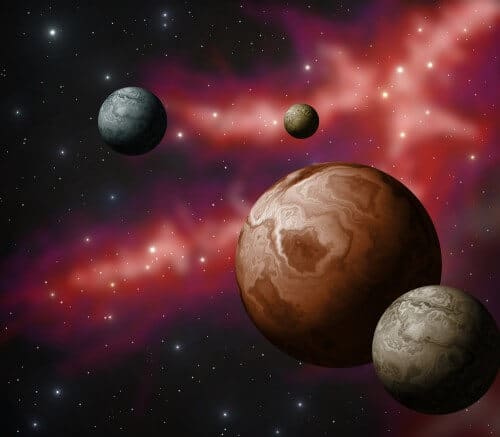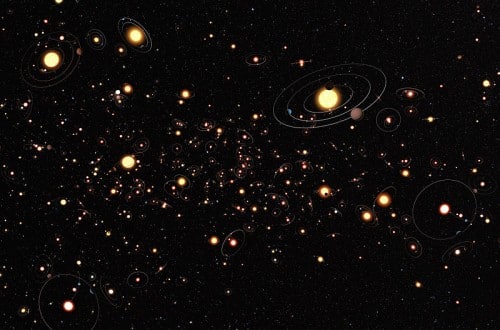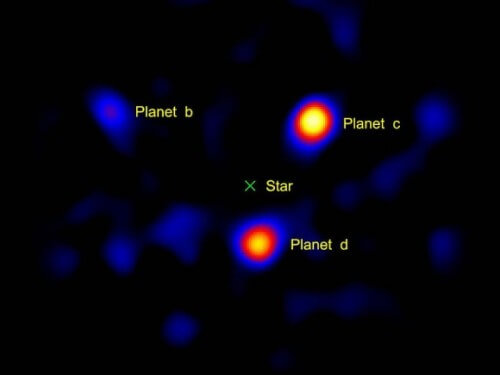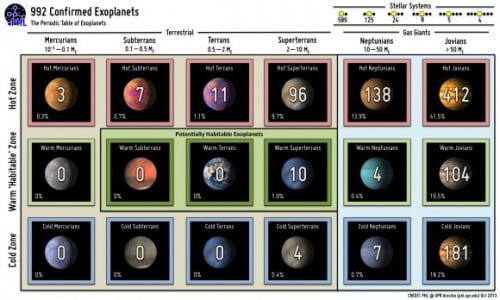As of yesterday, the number of confirmed planets reached 998 planets in 759 different solar systems. The Universe Today website summarizes an era that began with planets orbiting a pulsar and many hot Jupiters and a space telescope that ceased to operate but yielded along the way thousands of candidates waiting to be identified

A milestone in modern astronomy is about to be crossed. As of yesterday, the number of confirmed extraterrestrial planets reached 998 planets in 759 different solar systems. Although different tables provide different calculations, there is no doubt that soon we will pass the range of hundreds of planets to over a thousand.
The history of the discovery of planets outside the solar system split the trajectory of astronomy in the modern era. It is hard to think that a generation has already grown up in the last two decades in a world for which planets outside the solar system are a fact. I remember hearing promises of such discoveries in the 50s when astronomers bet that the chance of discovering planets outside the solar system was around XNUMX%.
Of course, there were plenty of false alarms before the first real discovery. 70 Ofiuki was the site of many claims, when W.S. Jacob Mitzpe Madras was the first to claim this in 1855. The proper motion shown by Barnard's star, six light years away from us, was studied during the 20th century to test a claim for the existence of an invisible companion causing it to oscillate. Ironically, Barnard's star did not enter the pantheon of worlds accompanying the planets.

However, the first confirmed planets came from an unexpected source - a pulsar known as PSR B1257+12 that was discovered to have two worlds orbiting it in 1992. Following him, the first planet orbiting a star from the Hershit series was discovered - 51 Pegasi in 1994. The news then came a month late in the magazine ASTRONOMY and the headline was "a planet was discovered".
Most of the methods and techniques used to discover planets relied on radial velocity or dips in the light output of the star as a result of the planets passing in front of them.
Both methods have their own advantages and disadvantages. The radial velocity method looks for changes in the star's spectrum and labels it as trailing occult companions orbiting a common center of mass. This method causes a bias for large worlds in short orbits, which is why hot Jupiters are the type of planet that dominated the early catalog.
A new method that became famous thanks to its use in the Kepler space telescope is the transition detection method. This method allowed for a more refined estimate of the planet's masses, assuming it passes in front of its Sun's disk from Earth's vantage point in the first place, but most do not.

Later, a direct observation of the eclipse of the mother star was also attempted. One of the planets photographed directly - Formhalout b changed its position in the orbit from 2004 to 2006.
Gravitational microlensing has also yielded the discovery of planets, with surveys such as MOA (Microlensing Observations in Astrophysics) and OGLE (the Optical Gravitational Lensing Experiment) capturing brief eclipse events in which an unknown body is seen crossing in front of a background star. This method is the only one that can be used to discover, for example, extremely distant planets and planets that float freely in space and do not orbit any sun.
More exotic techniques such as relativistic projection (sounds like something from Star Trek) have also been tried. Other methods include searching for small reefs in the light of planets orbiting the parent star that break up due to ellipsoidal variation when large planets orbit a star, as well as infrared detections of dust disks. We have always been amazed at the enormous wealth of data that can be found in a few dim photons.
The news about planets outside the solar system ranged from amazing to mundane. A Tatooine-like world surrounding a double star and systems where there is a bizarre resonance.
Missions such as the American Kepler and the European Coro are responsible for a large proportion of the discoveries. Scheffler recently ended his career of spotting small spots in the Hercules and Neville swan groups, leaving over 3,200 discoveries candidate for confirmation.

To the article on the Universe Today website
More of the topic in Hayadan:

3 תגובות
Since over 2,000 planets are now being certified, it is likely that several articles are being written about such certification at the same time, so the number will change quickly.
According to this site (http://exoplanet.eu/catalog/) There are 999 planets in 759 systems, of which 169 are multi-planet systems.
This is according to the French website
But there is the NASA archive that shows that there is only 911 and Wikipedia also follows the French site
of 998... 9 planets worthy of water existence out of 998
The largest system belongs to the star HD10180 7 planets and another 2 in the doubt star GLIESE 667 C has 3 planets that have the potential to hold water
The closest planet belongs to the cave of stars closest to us at a distance of 4.365 years, but since it is close to its mother planet, there is no possibility of water on it.. I hope for those interested that I have summarized it for you here briefly... Oh and the first official planet that was discovered was in 1995